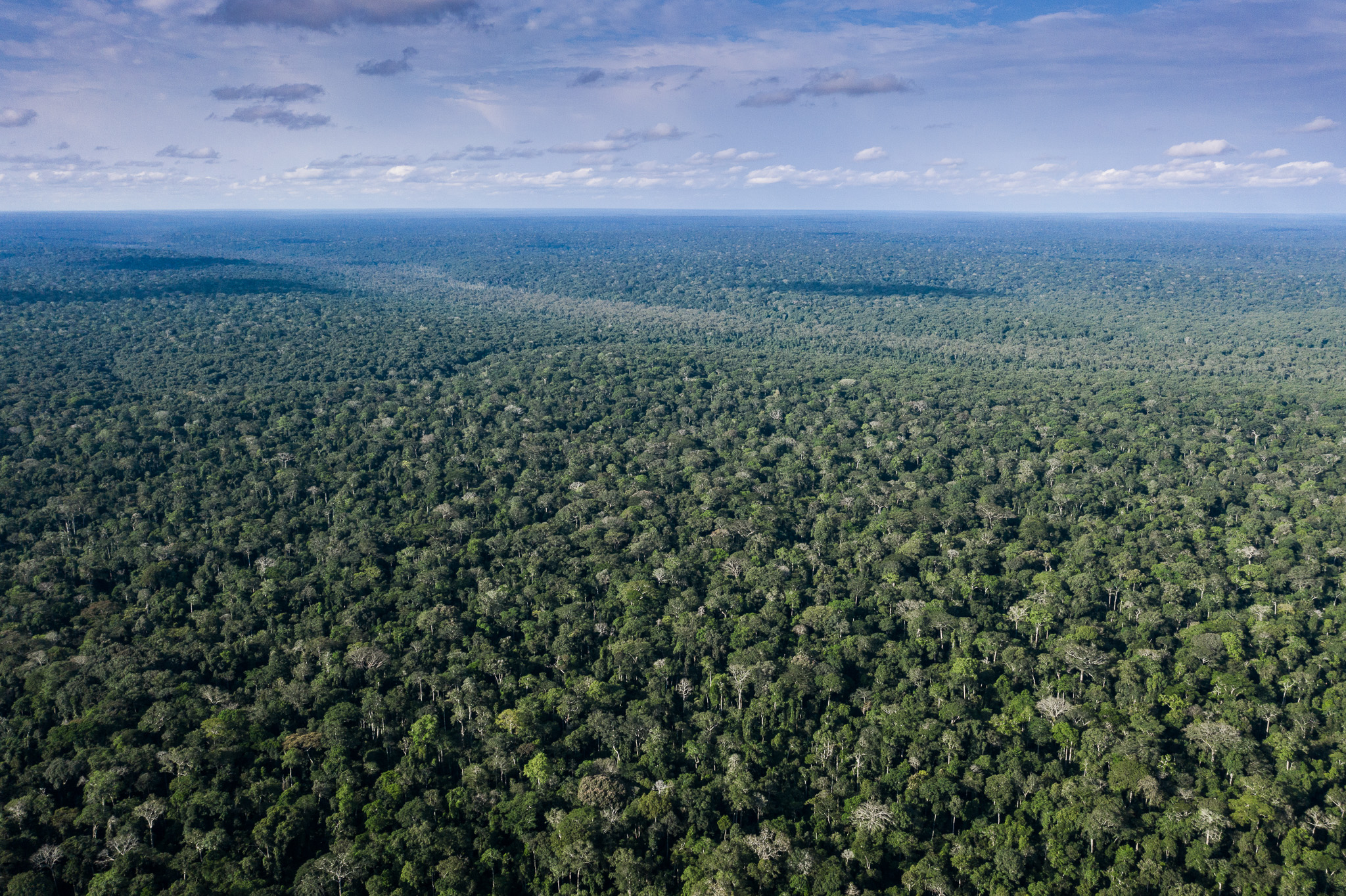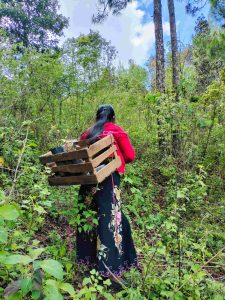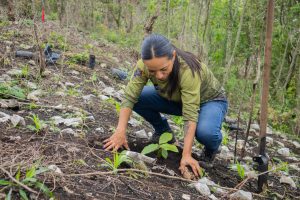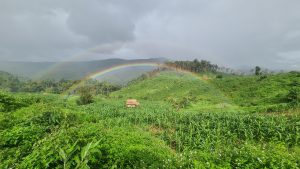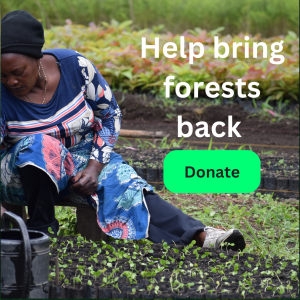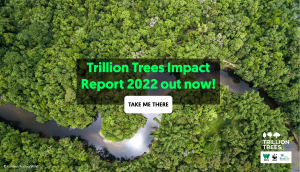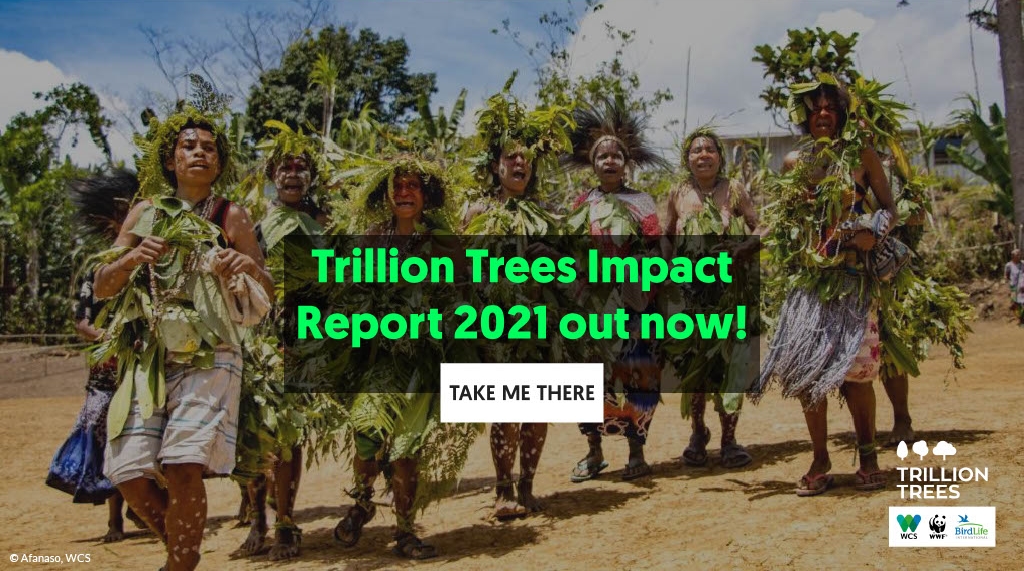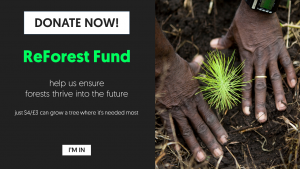A special place for people
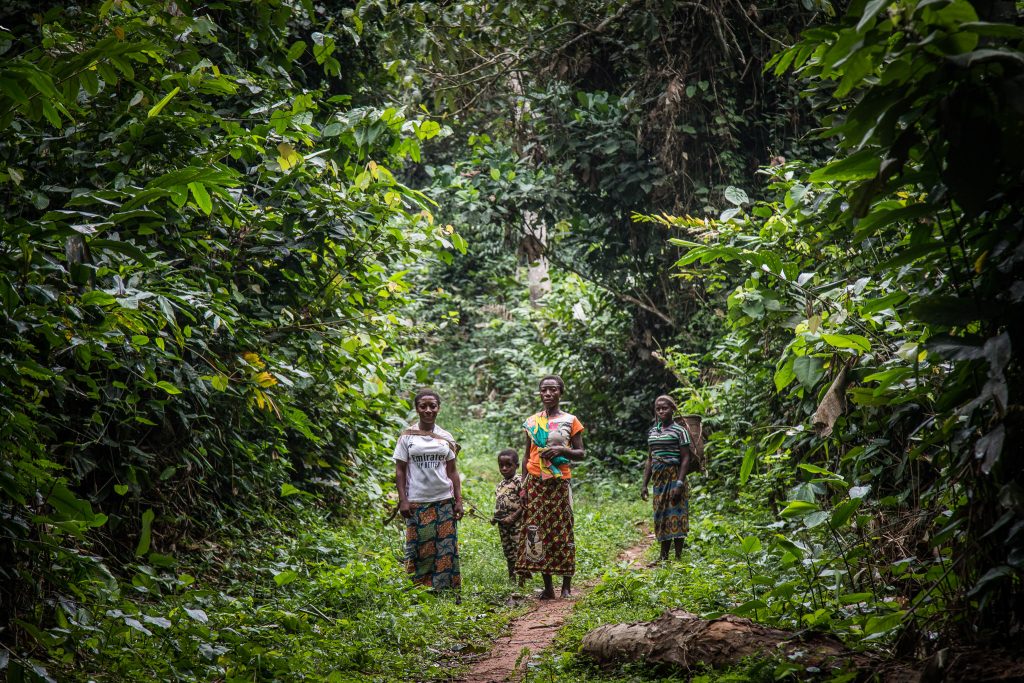
People have been living in the region for over 50,000 years, and today, there are over 150 ethnic groups and 75 million people who call it home. This includes farming communities such as the Bantu, one of the largest cultural groups in Africa, and groups such as the Twa, Mbenga, Mbuti and Ba’Aka who are traditionally hunter-gatherers. The forest spans six countries – Cameroon, Central African Republic, Democratic Republic of the Congo (DRC), Republic of the Congo, Equatorial Guinea and Gabon – and the majority of people living in the Congo Basin are reliant on forest resources for food, medicines, water and cultural practices.
Indigenous peoples have a deep understanding of their home. Their knowledge, cultural connection and support is a vital resource for achieving long-term protection of the forest. Shifting attitudes have meant greater recognition for the rights of local and indigenous communities living in and around the rainforest. Forest protection and restoration must balance the needs of local people with those of wild places. Several Congo Basin states have started to address this, with the Central African Republic recognising indigenous autonomy, and the Democratic Republic of the Congo enacting new laws for the rights and protection of forest communities.
A special place for wildlife
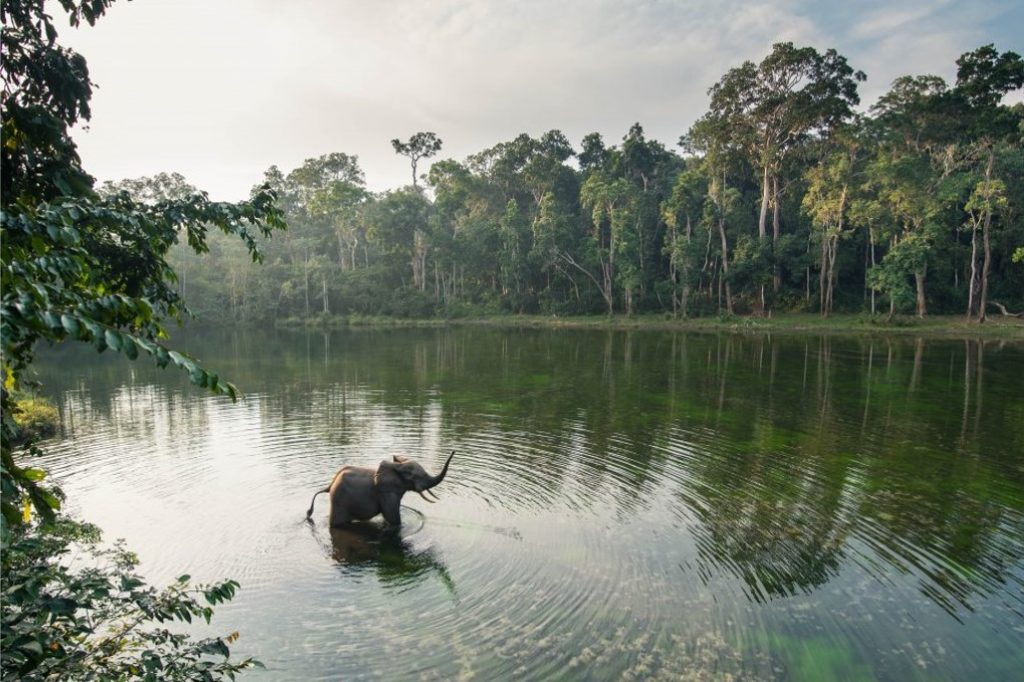
The rainforests of the Congo Basin are home to a spectacular variety of plant life – over 10,000 species – and many important animal species, including iconic gorillas, elephants, and chimpanzees.
Many people think there are only two elephant species, but in the Congo Basin, a smaller, third cousin plays a vital role in engineering their forest habitat. African Forest Elephants (Loxodonta cyclotis) act as seed dispersers for over 500 plant species, including 43 that are dependent solely on elephants for this job, ensuring the long-term survival of the forest. These elephants also help to thin vegetation, allowing standing trees to grow taller, stronger and also possibly store more carbon. For this reason, their disappearance from much of their traditional range area is not only a tragedy for elephants, but also for the Congo rainforest as a whole.
A forest under threat
Deforestation is a significant threat to the forests of the Congo Basin because the area is a rich source of natural resources including oil, diamonds, gold, wood and coltan – one of the world’s most vital minerals used in the manufacture of mobile phones – 60% of global reserves of coltan are found in the Democratic Republic of Congo. The worldwide demand for these types of resources is growing and many local people depend on them for income; however, current mining and logging methods are unsustainable, cause widespread damage to the forest, and often exploitation of local people. In addition, the commercial bushmeat trade presents a significant threat to wildlife species and is difficult to stop. In the Democratic Republic of Congo alone, over a million tonnes of bushmeat are consumed each year. Elephants are also killed for ivory, which threatens them with extinction.
Global commitments to save this critical carbon sink
A landmark $500m agreement was launched at COP26 in November 2021 to protect the Democratic Republic of Congo’s forest. Through this multi-year partnership, the DRC aims to first cap forest cover loss at its 2014-2018 average and ensure that deforestation continues to decline. The partnership will also promote the regeneration of 8 million hectares of degraded land and forests, and place 30% of national areas under a protection status, including areas where local communities undertake efforts to manage forests sustainably.
Financing the protection of the forest is a challenge. Listen to a Mongabay podcast about what it would cost to protect the Congo rainforest.
Working to protect the forest and its wildlife
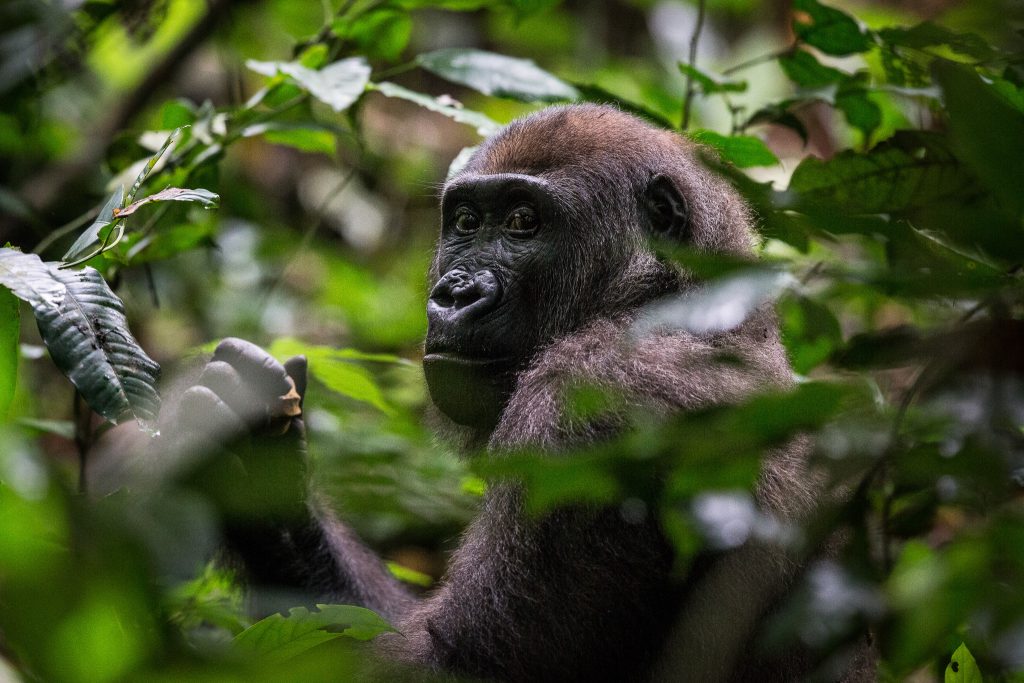
Trillion Trees partner, the Wildlife Conservation Society (WCS), is working to help protect the precious forest in the Nouabalé-Ndoki National Park (NNNP) which covers more than 4,000 square kilometers of lowland rainforest in the northern Republic of Congo. Created in 1993, the park and its buffer zone have benefited from more than 25 years of collaborative management between the Congolese Government, WCS and local Indigenous Peoples, including the Ba’Aka. The reserve is now one of the most crucial protected areas for the conservation of wildlife in Central Africa and one of the world’s last most intact forests. The project faces many of the challenges and threats outlined above, but uses techniques informed by science and working hand-in-hand with local communities to improve livelihoods, whilst at the same time protecting the forest and its wildlife. Many people from the surrounding villages of Bomassa and Makao work for the park as guides, trackers, research assistants, ecoguards, drivers, and accountants. Their expertise and deep knowledge of the ecosystem, passed down through generations, enabled the Park to create research sites in the heart of the forest which have become highly valuable centres for long-term study.
In February 2023, the Djéké Triangle, an unlogged forest of 95 square kilometers in the Republic of Congo, became part of Nouabalé-Ndoki National Park. This area is an important home for the Critically Endangered western lowland gorilla. WCS conducted community consultations in 13 villages and settlements in the area for two years prior, working a Free, Prior and Informed Consent (FPIC) process. Communities were involved in discussing the extension of the Park and identifying areas of cultural and economic importance within Djéké. As a result, an area where the community can continue the sustainable harvest of non-timber products and traditional fishing was agreed.
You can read more about the Nouabalé-Ndoki National Park and the inspirational work that goes on to protect and conserve it here.

